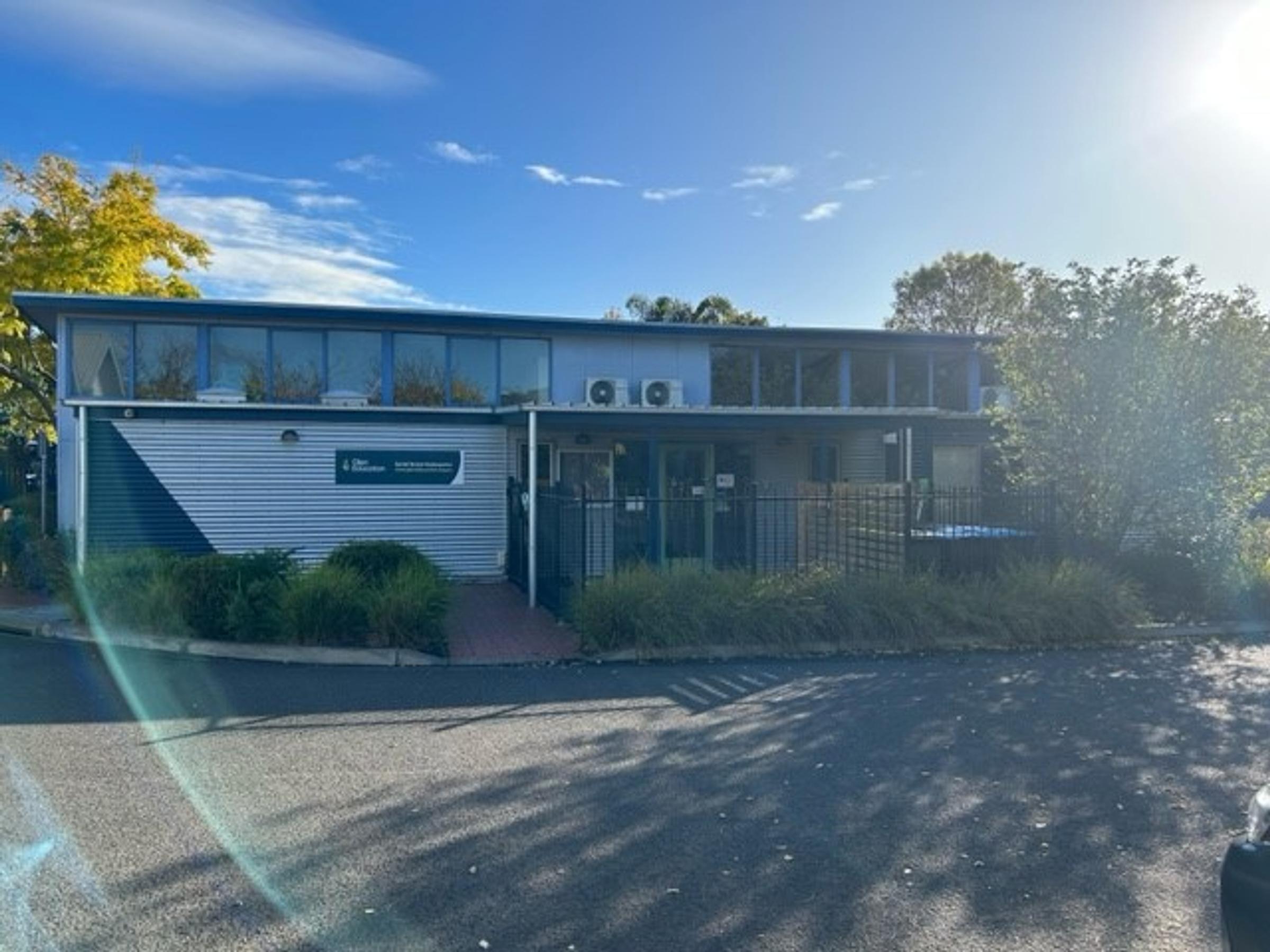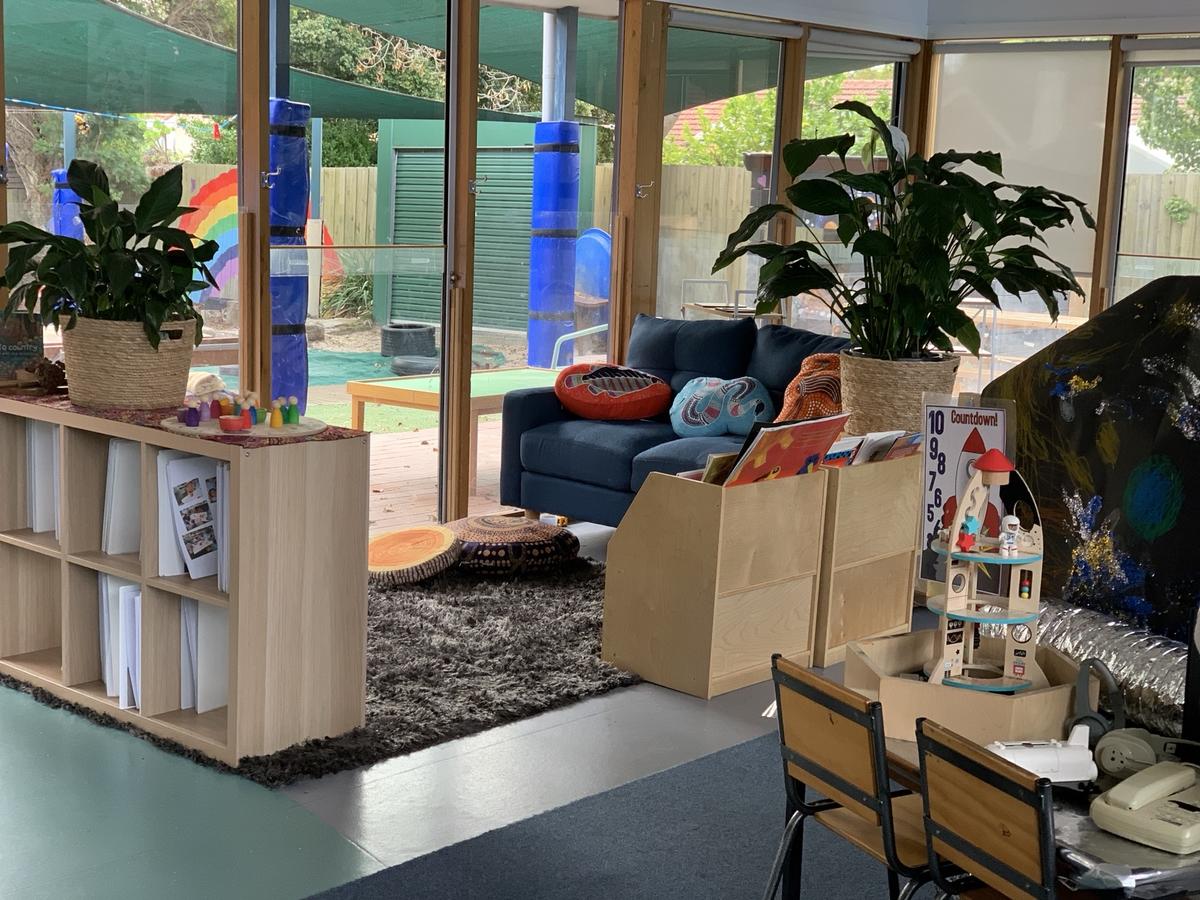Glen Education Serrel Street

Intentional Learning Environments
Joanna Palios, Early Childhood Teacher
Our surroundings whether indoor or outdoor are an integral part of our curriculum to inspire learning, invite curiosity, and foster a sense of belonging.
As a team here at Glen Serrell Street, we consult one another on how to inspire and engage children’s learning and offer opportunities and a balance of experiences to include Manipulative play, Dramatic and Imaginative Play, Sensory Play, Visual Arts, Active Play, and Quiet Play. As educators we plan and provide experiences for children to learn not only through play and are guided by their interests but intentionally setting up environments to inspire and invite curiosity in all permanent play spaces. What better way to focus on the environment as the third teacher but to hear from our team!
Our book corner for example is equipped with a variety of quality books, children are empowered to choose their own story fostering a sense of belonging to their space to either read or be read too. This space too fosters a sense of belonging for families as part of our community as they too often sit, read a book then say goodbye to their child as they move on onto another activity. It’s an environment that is inclusive and accessible for adults/ grandparents and carers, ‘creating a comfortable live in feeling’ (ACECQA, Quality Area 3). The couch is cosy and comfortable with indigenous printed cushions, the area is clean, has lots of natural light through our large windows, a lovely large Madonna lily plant provides softness and a calming connection to nature. In this quiet moment snuggled on the couch a child read a book about a comet! In their curiosity: “they wanted to learn more, a group of children joined in, on the iPad we watched a short video on Hayley’s comet, they were amazed at the fireball and were inspired to create their own work with a range of art and craft.” -Marni
In this instance the environment (book corner) as the ‘third teacher’ provided intent and purpose as it “invited children to delve deeper, investigate and represent their learning through a range of mediums” (ACECQA, Quality Area 3).
Our sessions begin with an acknowledgement of country, we pay our respects and honour our first nations people, their land, and the responsibility each one of us must respect and look after it. We have a shared responsibility for our environments both indoors and outdoors and this is reflected by sustainable practices in our service, such as using natural materials which have a connection to earth thus fostering respect and love of nature also linking to Quality Area 3.2.2 ‘resources, materials allow for multiple uses’. As an educational team it is important that our environment as ‘the third teacher’ “reflects and honours Aboriginal and Torres Strait Islander history and culture,” Quality Area 3.2.
“It is important that play spaces are inviting, aesthetically pleasing and spark imagination to provoke creativity. Offering various materials/resources that are set up purposefully, the children can see and use the experience as they wish, role model, ask questions to be curious” - Lyndal
As an educational team we set up our environment to help facilitate exploration, for example visual arts “the colour changing flower science experience, children hypothesised, and predicted outcomes. Easel painting both indoors and outdoors inspired by the book ‘How the Birds Got Their Colours’ by Mary Albert, which has pictures adapted from the Aboriginal Bardi People. This play space fosters inclusivity, collaboration, creativity, positive reinforcement and a sense of ownership as this helps children feel valued and connected to their play space and community” - Amrutha
“Respecting our environment and helping to pack up and reset experiences helps children to belong. If a space is disorganised and messy, many children avoid the area but when we tidy up and reset children will come to play” -Jun.
Children’s sense of agency is promoted when they are involved and contribute to make the environment safe.
As an educational team, we strive for our environments indoor and outdoor to be inviting to foster and encourage communication, relationships, the use of natural materials and natural light to inspire learning, by inviting curiosity and fostering a sense of belonging.



